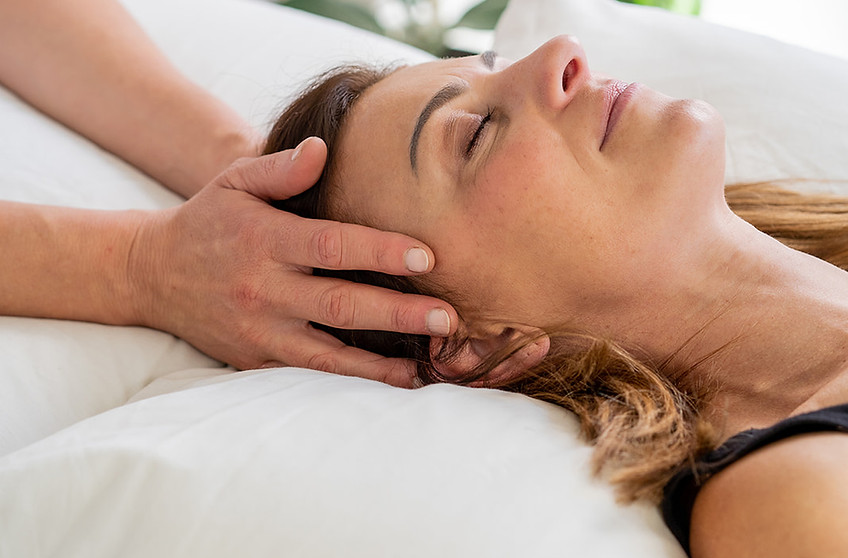Biodynamic Craniosacral Therapy

"listening touch"
What is Biodynamic Craniosacral Therapy?
Biodynamic Craniosacral Therapy (BCST) is a gentle, hands-on therapy that works directly with the nervous system to release patterns of stress and trauma. Rooted in osteopathy and informed by neuroscience, BCST recognizes the body's innate ability to heal when given the right conditions.
Unlike manipulative bodywork, BCST is non-invasive and deeply receptive. Through subtle, light touch at key areas of the body—such as the skull, spine, and sacrum—the practitioner listens to the body’s rhythms, tensions, and holding patterns. This process supports a shift from survival states (fight/flight/freeze) into a more regulated, adaptive state.
A key part of this work involves interoception—the body’s ability to sense and interpret internal signals such as breath, heartbeat, or tension. Many individuals, especially those with trauma histories, experience dysregulated interoception, leading to disconnection from bodily sensations or overwhelming physical symptoms. BCST gently restores this inner awareness, helping clients develop a safer, more attuned relationship with their bodies. This enhances emotional processing, self-regulation, and overall resilience, making BCST an ideal complement to psychotherapy and other trauma-informed care approaches.
With all my training and experience, I feel that my skills of a listening, feeling, hearing and observing touch provides a safe space for people to connect to their bodies and entrust me to work on their health goals, whether it be trauma, physical or emotional held in their bodies presenting itself as holding patterns of tension and pain, headaches, migraines, depression, anxiety, insomnia or the like.
What BCST can treat?
-
Feelings of disconnect to the world or to yourself
-
Emotional/Physical trauma
-
Exhaustion
-
Help feel calmer in your body
-
Regulate your nervous system
-
Jaw & TMJ dysfunction and pain
-
Teeth grinding
-
Anxiety
-
Insomnia
-
Headaches/Migraines
-
Dizziness
-
Tightness & pain
History
Craniosacral was initial discovered by Dr William Sutherland a student of the founder of Osteopathy, over 100 years ago. After he discovered on examining the articulations of our cranial bones (bones that make our skull), he found the sutures that hold our cranial bones together are in fact designed to express small degrees of motion.
Sutherland conducted years of research and was able to demonstrate the existence of motion and concluded that this motion is produced by our bodies inherent life force, which he called the ‘Breath of Life’, also known as ‘Qi’, ‘Life force’, ‘Universal energy’ and more.
Dr Sutherland was considered a pioneer of Osteopathy Craniosacral. As the science and skills of this style of Osteopathy evolved especially by one of his students John Upledger in the mid 1980’s, it was taught to non-osteopaths and termed Craniosacral therapy. The work became more evolved and developed into a fuller model, working with trauma processes, an orientation to a deeper expression of health, a more holistic nature of the human body now known as Biodynamic Craniosacral Therapy, which is what I am trained in.
My training was aimed at helping me to become highly skilled at developing a listening touch (feeling with sensitive hands) to the body’s inherent health mechanisms. We were also trained to observe and feel not only with our hands but with all our senses, a perceptual awareness. We develop these skills, along with providing a safe space so that in a session the natural forces of your own bodies health can brings about natural adjustments from within your own resources and set by your bodies priorities. Sound confusing? Watch the video below.




















